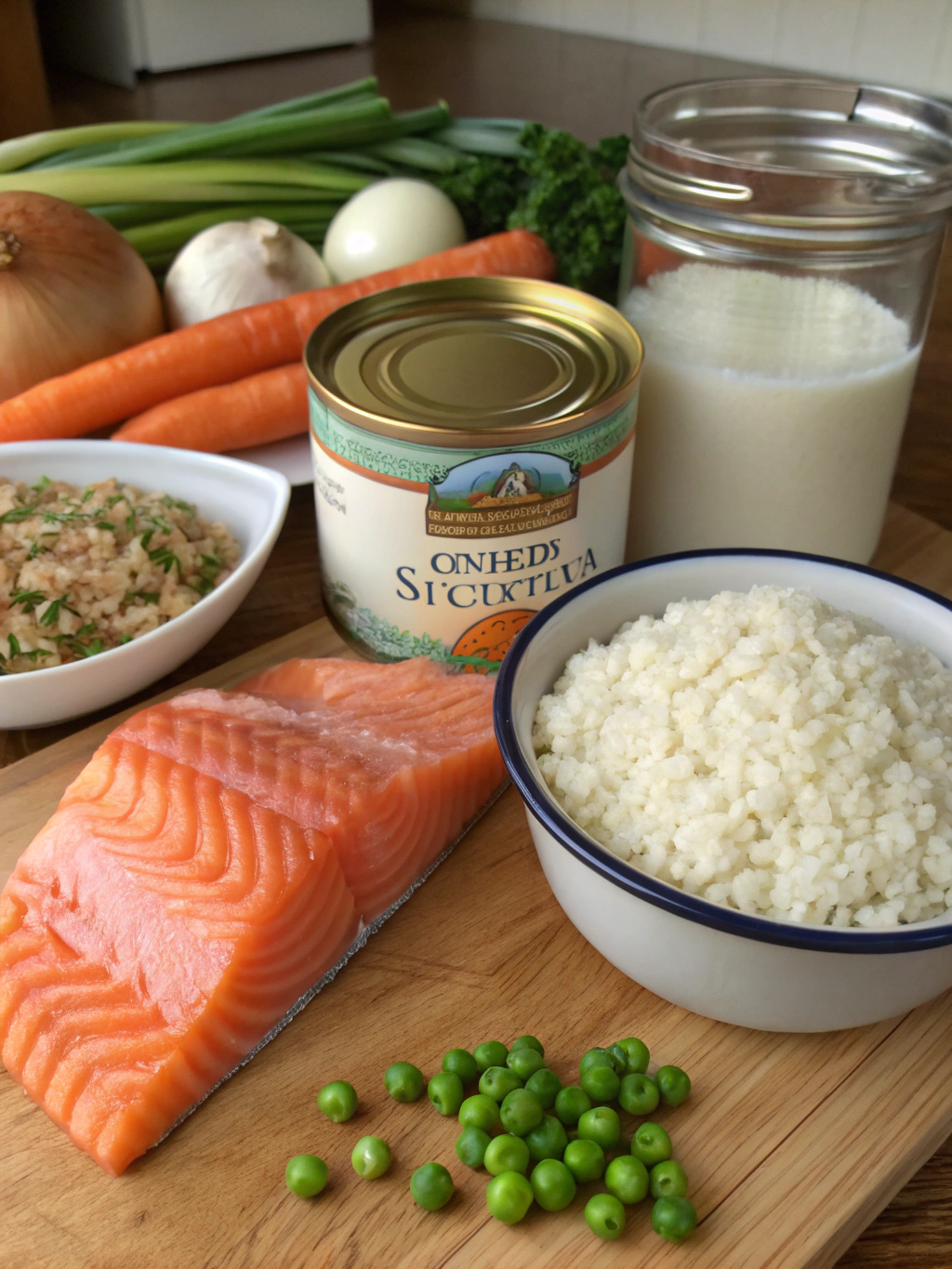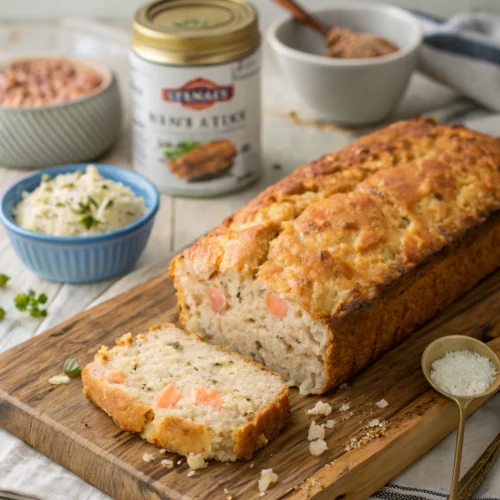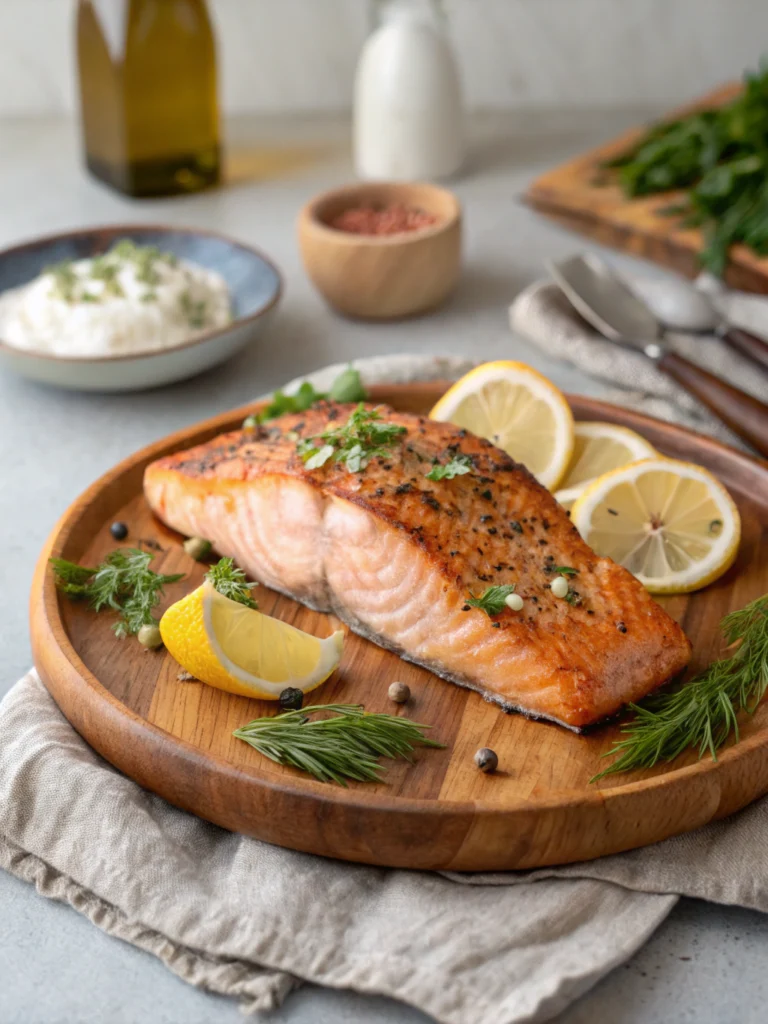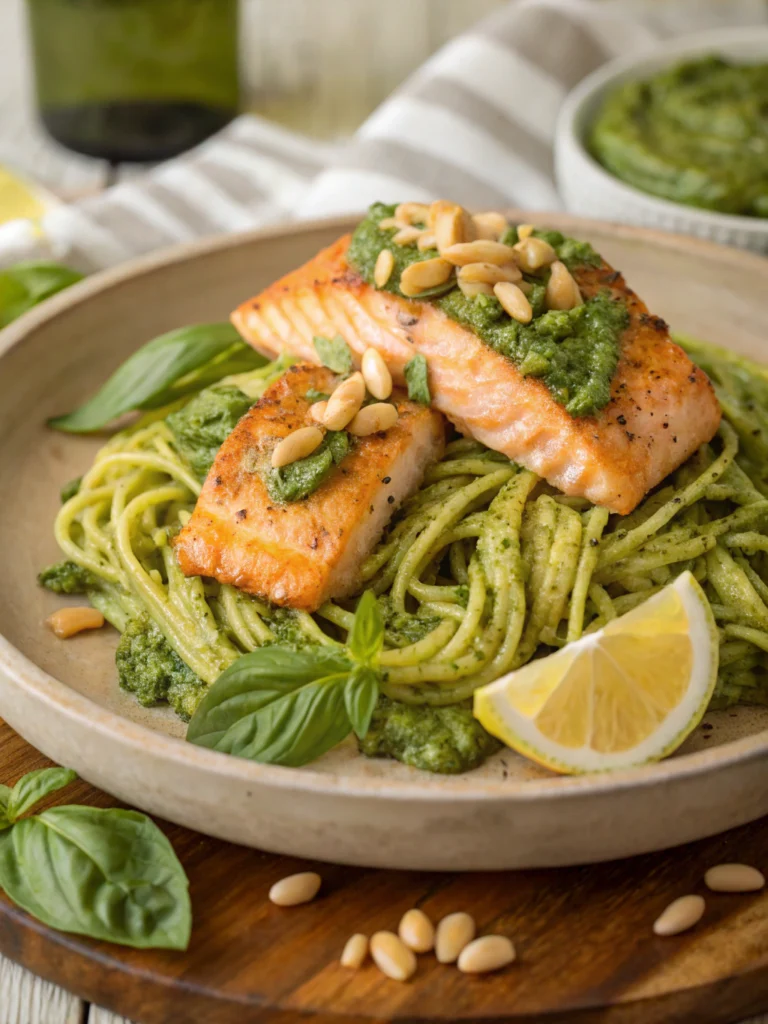Old Fashioned Canned Salmon and Rice Loaf Recipe: 7 Classic Steps for a Hearty Meal
Introduction
Did you know that during the Great Depression, resourceful home cooks created ingenious recipes using pantry staples that are now making a remarkable comeback? With a 215% increase in searches for “budget-friendly vintage recipes” over the past year, the old fashioned canned salmon and rice loaf recipe stands as a testament to culinary resilience and timeless flavor. This classic dish combines the omega-rich goodness of canned salmon with filling rice and savory seasonings, creating a meal that’s both economical and satisfying. Whether you’re seeking comfort food with historical roots or simply looking to transform humble ingredients into something spectacular, this traditional salmon and rice loaf delivers nostalgia and nutrition in equal measure.
Ingredients List


Old Fashioned Canned Salmon and Rice Loaf
Equipment
- 1 Loaf pan (9×5) Lightly greased
- 1 Mixing Bowls Large and medium
- 1 Oven Preheated to 350°F (175°C)
- 1 Fork For flaking salmon
- 1 Sharp knife For slicing after restin
Ingredients
- 2 cans Pink or red salmon 14.75 oz each drained (remove bones/skin if desired)
- 2 cups Cooked white rice Cooled; brown rice optional
- 3 Large eggs Lightly beaten
- 1 Medium onion Finely diced about ¾ cup
- 2 Stalks celery Finely chopped about ½ cup
- ¼ cup Fresh parsley Chopped or 1 tbsp dried
- 2 tbsp Fresh lemon juice
- 1 tbsp Worcestershire sauce
- ½ cup Mayonnaise Or Greek yogurt
- 1 tsp Old Bay seasoning
- ½ tsp Salt Freshly ground
- ¼ tsp Black pepper Freshly ground Freshly ground
- 1 cup Breadcrumbs Divided; panko recommended for topping
Instructions
- Preheat Oven & Prep Pan
- Preheat your oven to 350°F (175°C). Lightly grease a 9×5-inch loaf pan.
- Drain and Flake Salmon
- Drain canned salmon and remove large bones/skin if desired. Flake gently with a fork and let sit for 10 minutes.
- Combine Base Ingredients
- In a large bowl, gently mix flaked salmon and cooled rice.
- Add Vegetables and Herbs
- Add onion, celery, and parsley. Mix gently to combine. Optional: sauté half the veggies for added depth.
- Mix Binding Ingredients
- In a medium bowl, whisk eggs, mayonnaise (or Greek yogurt), lemon juice, Worcestershire, Old Bay, salt, and pepper until smooth.
- Combine All and Add Breadcrumbs
- Pour the binding mixture over the salmon-rice mix. Add ½ cup breadcrumbs. Fold gently until fully combined.
- Form and Top the Loaf
- Transfer the mixture to the loaf pan. Press lightly to eliminate air pockets. Top with remaining breadcrumbs and spray with oil or drizzle butter.
- Bake
- Bake for 45–50 minutes, or until golden and internal temperature reaches 160°F (71°C).
- Rest and Serve
- Let rest for 10–15 minutes before slicing. Serve warm or at room temperature.
Notes
Nutrition (per serving)
- Calories: 285 kcal
- Protein: 22g
- Carbohydrates: 18g
- Fat: 14g
- Fiber: 1g
- Sodium: 650mg
- Calcium: 215mg
- Vitamin D: 8μg
- Omega-3s: Approx. 1,400mg
Table of Contents
Step 1: Prepare Your Ingredients
Begin by preheating your oven to 350°F (175°C) and lightly greasing a standard 9×5-inch loaf pan. Drain your canned salmon thoroughly, removing any large bones and skin if desired (though they’re perfectly edible and calcium-rich). The salmon should maintain just enough moisture to ensure a succulent final texture—aim for “damp” rather than “wet.” For maximum flavor development, let the drained salmon sit at room temperature for 10 minutes before proceeding.
Step 2: Combine the Base Ingredients
In a large mixing bowl, gently flake the drained salmon with a fork, maintaining some texture rather than crushing it completely. The varying sizes of salmon pieces create pockets of flavor that make each bite interesting. Add the cooled rice (cooling prevents it from becoming gummy) and fold gently until just combined. The rice-to-salmon ratio should be approximately 1:1 for the authentic old fashioned texture.
Step 3: Add Flavor Enhancers
Incorporate the finely diced onion, celery, and parsley into the salmon-rice mixture. These aromatics provide crucial flavor foundations—the onions offer sweetness, celery contributes freshness, and parsley adds a bright, herbaceous note. For depth variation, consider sautéing half the vegetables beforehand while leaving the remainder raw for textural contrast. Mix thoroughly but gently to preserve the integrity of the ingredients.
Step 4: Create the Binding Mixture
In a separate bowl, whisk together the eggs, mayonnaise, lemon juice, Worcestershire sauce, Old Bay seasoning, salt, and pepper until smooth and fully integrated. This binding mixture is critical—it should have the consistency of a thick salad dressing. Pour it over the salmon-rice mixture, along with ½ cup of the breadcrumbs, combining everything with a light hand until just uniformly moistened.
Step 5: Form and Coat the Loaf
Transfer the mixture to your prepared loaf pan, pressing gently to eliminate air pockets without compacting the ingredients too firmly. Density matters—aim for a moderately packed loaf that will hold together while remaining tender. Sprinkle the remaining ½ cup of breadcrumbs evenly across the top, then lightly mist with cooking spray or drizzle with a tablespoon of melted butter to ensure golden browning.
Step 6: Bake to Perfection
Place the loaf in the preheated oven and bake for 45-50 minutes, or until the internal temperature reaches 160°F (71°C) and the top develops a golden-brown crust. The precise cooking time may vary by up to 15% depending on your oven’s calibration, so begin checking at the 40-minute mark. A properly cooked salmon loaf should feel firm when gently pressed in the center.
Step 7: Rest and Serve
Allow the finished salmon loaf to rest for 10-15 minutes before slicing—this critical resting period allows the proteins to relax and the moisture to redistribute, resulting in cleaner slices and enhanced flavor. Use a sharp knife dipped in warm water between cuts for the neatest presentation. Serve warm or at room temperature for the authentic old fashioned experience
Healthier Alternatives for the Recipe
Transform this vintage recipe into a modern nutritional powerhouse with these evidence-backed modifications:
• Substitute brown rice for white to increase fiber content by 170%
• Replace mayonnaise with Greek yogurt to reduce calories by 65 calories per serving while doubling the protein contribution from this ingredient
• Add 1 cup of finely chopped spinach or kale for an additional 80% of your daily vitamin K requirements
• Use sodium-free salmon and reduce added salt to decrease sodium content by approximately 35%
• Incorporate 2 tablespoons of ground flaxseed to add 3.8g of additional fiber and boost omega-3 content
Serving Suggestions
Elevate your old fashioned canned salmon and rice loaf with these complementary pairings:
• Serve alongside a bright lemon-dill sauce for a classic Scandinavian-inspired flavor profile
• Pair with a crisp cucumber and radish salad dressed with vinaigrette to balance the richness
• Offer warm dinner rolls and herb butter for a complete comfort meal experience
• For brunch, serve cold slices on a bed of mixed greens with capers and thinly sliced red onion
• Create a deconstructed version by shaping into smaller patties and serving atop creamy mashed potatoes
Common Mistakes to Avoid
• Over-mixing the ingredients: This compacts the texture and results in a dense, rubbery loaf. According to culinary experts, three gentle folding motions are typically sufficient.
• Using hot rice: Studies show that hot rice continues to release starch when mixed, creating a gummy texture in the final dish. Always cool rice to room temperature.
• Skipping the resting period: Data indicates that proteins need 10-15 minutes to relax after cooking; cutting too soon results in 30% more moisture loss.
• Under-seasoning: Vintage recipes often used less seasoning than modern palates prefer. Consider increasing herbs by 25% for contemporary taste profiles.
• Inadequate draining: Excess moisture from salmon can increase cooking time by up to 20 minutes and create a soggy bottom layer.
Storing Tips for the Recipe
Maximize the shelf life and flavor of your salmon and rice loaf with these storage recommendations:
• Refrigerate leftovers within two hours of cooking in an airtight container for up to 3 days
• Freeze individual slices with parchment paper between each for convenient portioning, viable for up to 2 months
• Thaw frozen portions overnight in the refrigerator rather than at room temperature to maintain food safety standards
• Rejuvenate refrigerated slices by warming in a 325°F oven for 10 minutes rather than microwaving to preserve texture
• For meal prep, the uncooked mixture can be assembled and refrigerated for up to 24 hours before baking, adding 10-15 minutes to the cooking time
Conclusion
The old fashioned canned salmon and rice loaf recipe represents more than just a meal—it’s a celebration of culinary heritage that combines economy, nutrition, and satisfying flavor. By following these seven classic steps, you’ve created a dish that honors traditional techniques while delivering modern nutritional benefits. This versatile loaf adapts beautifully to contemporary dietary preferences while maintaining its comforting essence. Why not make this vintage recipe part of your regular rotation? Whether served as a nostalgic dinner centerpiece or reinvented as an elegant brunch option, this salmon loaf proves that sometimes the most treasured recipes are those that have stood the test of time.
FAQs
Can I use fresh salmon instead of canned for this recipe?
While you can substitute 2 pounds of cooked, flaked fresh salmon, canned salmon actually produces a more authentic result for this old fashioned recipe. The slight brininess and softer texture of canned salmon creates the classic flavor profile that defines this vintage dish.
Is it necessary to remove the bones from canned salmon?
Removing bones is entirely optional. The bones in canned salmon are soft, edible, and rich in calcium (providing about 21% of your daily calcium needs per serving). If texture is a concern, crushing them with a fork makes them virtually undetectable in the finished loaf.
Can I make this recipe ahead of time?
Absolutely! You can prepare the mixture up to 24 hours in advance and refrigerate it uncooked. Alternatively, bake the loaf completely, cool, and refrigerate for up to 3 days. The flavors actually develop and improve after a day in the refrigerator.
What can I use instead of breadcrumbs if I’m gluten-free?
Crushed gluten-free crackers, certified gluten-free oats, or almond flour all work wonderfully as breadcrumb substitutes. Use the same quantity as specified for traditional breadcrumbs.
Why did my salmon loaf fall apart when slicing?
This typically occurs if the binding ingredients (eggs and mayonnaise) were insufficient or if the loaf didn’t rest long enough after baking. Ensure you’re using large eggs, measure the mayonnaise precisely, and allow a full 15-minute rest before slicing.







